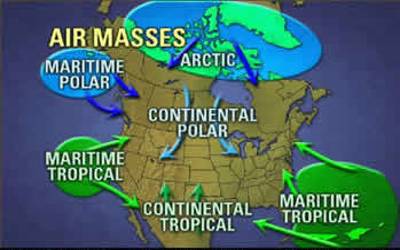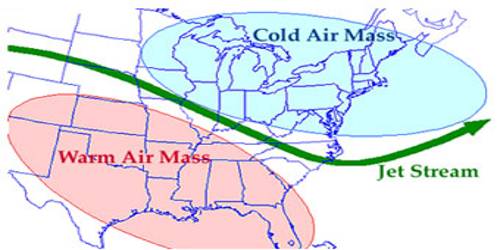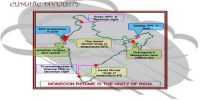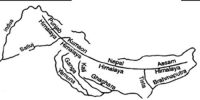Air Mass: A body of air whose temperature and humidity characteristics, acquired in the source region, remain relatively constant over a horizontal distance of hundreds to thousands of km. Air masses develop their climatic characteristics by remaining stationary over a source region for a number of days. It is a large (usually thousands of miles across) volume of air that has horizontally uniform properties in terms of temperature and to a lesser extent humidity. Air masses are classified according to their temperature and humidity characteristics.
Air masses can be divided into two main categories based on whether they are found over land or water. If the air mass is found over land, this is a continental air mass. If the air mass is found over water, this is a maritime air mass. This makes sense: continental air masses occur over the continents, maritime air masses occur over the water or marine environments. These categories are represented by a lowercase ‘c’ for continental or ‘m’ for maritime.

Polar air masses become very cold, especially in the winter, because relatively little sunlight shines on the poles of the Earth. A “continental polar” airmass will be somewhat colder and less humid than a “maritime polar” airmass. A “tropical maritime” airmass will be very warm and humid.
Four general air mass classifications categorized according to the source region.
- polar latitudes P – located poleward of 60 degrees north and south
- tropical latitudes T – located within about 25 degrees of the equator
- continental c – located over large land masses–dry
- marine m – located over the oceans—-moist
The source region of the air mass helps us classify it even further, and for this, we have three categories. Arctic air masses occur over arctic regions, like Greenland and Antarctica. Polar air masses occur a little bit farther from the poles, like in Siberia, Canada and the northern Atlantic and Pacific Oceans.















